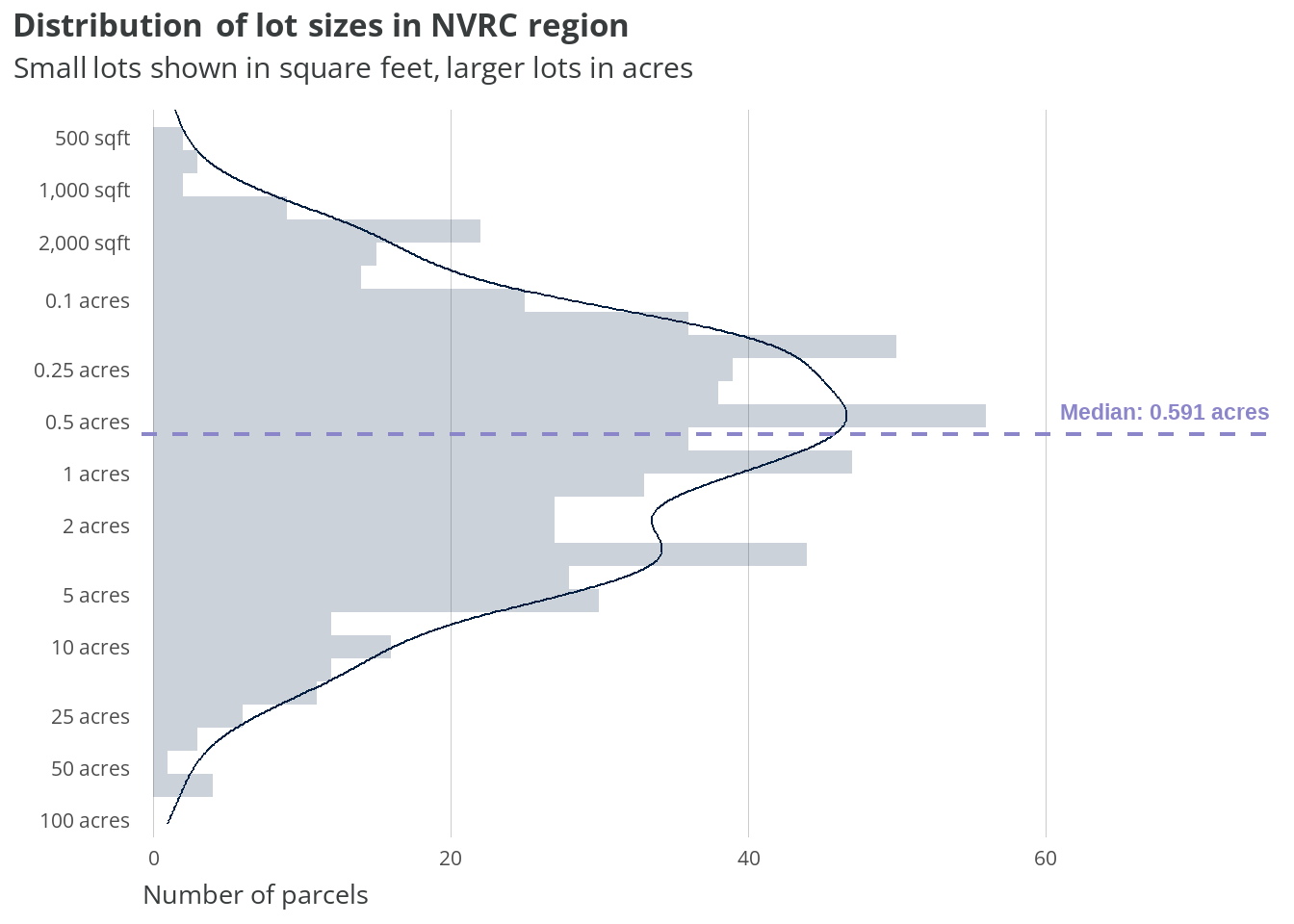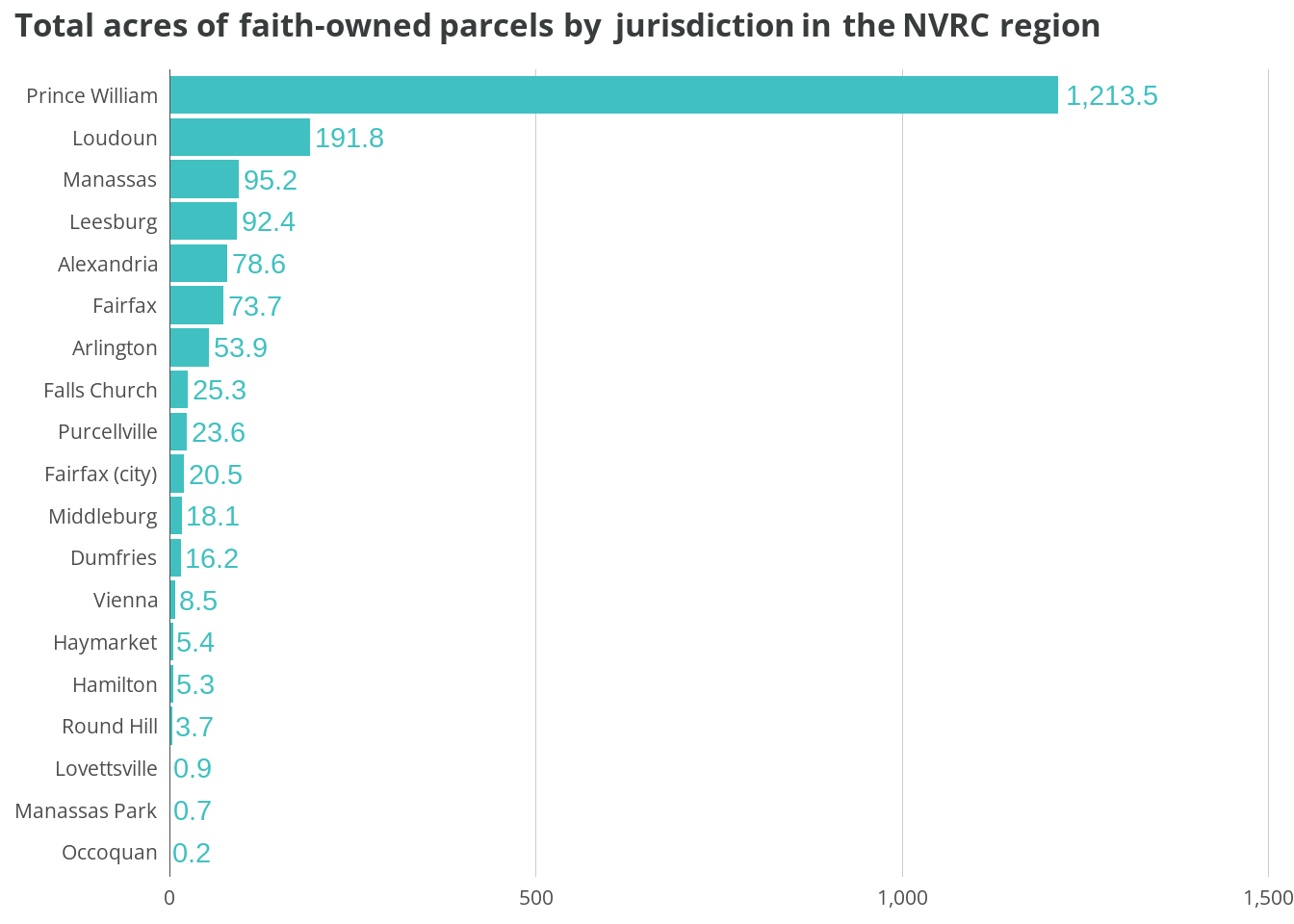
6 Northern Virginia zoning
The Virginia Zoning Atlas presents a unique opportunity to leverage research already conducted by HousingForward Virginia and the Mercatus Center at George Mason University. With the Virginia Zoning Atlas, parcels identified can be associated with their respective zoning districts and the rules governing residential development on them.
Conducting a spatial join in QGIS between the 652 identified parcels and the Northern Virginia Zoning Atlas resulted in 648 parcels retained. The four parcels that were removed were located in areas not covered by the Virginia Zoning Atlas, most likely to the area being deemed protected or undevelopable. The median lot size among these 648 parcels is 25,723 square feet (0.59 acres). The number of parcels that are one acre or greater is 255, which is 39% of all parcels.

Based on the Virginia Zoning Atlas analysis, multifamily housing is prohibited on 422 of the identified parcels. A public hearing is required for multifamily housing development on 21 of those parcels, and it is allowed on 205 parcels by-right. If enacted as originally introduced in 2024, the Faith in Housing legislation could impact 443 parcels in the Northern Virginia Regional Commission service area (68% of identified parcels).

The graph below shows the number of faith-owned parcels in each jurisdiction within the Northern Virginia Regional Commission’s footprint. Prince William County contains the most faith-owned parcels at 214, followed by Alexandria at 107. The fewest parcels are mainly within smaller towns, but also the City of Manassas Park.

Prince William County maintains its top spot when looking at total acreage of those faith-owned parcels (1,213.50 acres). But this time, they are followed by Loudoun County, who comes in at 191.75 acres, only a sixth of the acreage in Prince William. All other jurisdictions in the Northern Virginia region have a total acreage under 100 for faith-owned parcels.

The Virginia Zoning Atlas allows users and researchers to understand what types of housing can be built, and whether what can be built requires a public hearing process. This process called “entitlement” is a process that requires property owners and developers to meet certain requirements and receive approval from the governing body to build what it is proposing. There are important considerations that go into these decisions, such as whether what is being proposed aligns with the community’s comprehensive plan or whether the existing community opposes it or not. This process can be cumbersome and illicit irrational opposition based on misconceptions about density and change. Elected officials can easily be pushed by a vocal minority to vote down housing in spite of its alignment with community plans and explicit need.
The interactive chart below shows a breakdown of each jurisdiction in the Northern Virginia region in terms of:
- Total count of faith-owned parcels
- Percentage of those parcels that can be developed as single-family housing
- Percentage of those parcels that can be developed as two-family housing
- Percentage of those parcels that can be developed as three or more family housing
For a majority of parcels in the region, many could be redeveloped as single-family housing without having to go through a public hearing process. However, fewer and fewer parcels can be redeveloped into denser housing options like duplexes or multifamily housing. Alexandria and Arlington are the most permissive due to their most recent zoning changes, but they have faced legal challenges that put the analysis into question in those areas. More recently a judge overturned the Missing Middle zoning changes in Arlington and these have no doubt impacted the analysis. What will come of the legal challenges in Alexandria is yet to be seen, but the Arlington decision certainly puts the permissiveness of faith-owned parcels in Alexandria in jeopardy.
The figure below specifically focuses on by-right multifamily housing. As mentioned before, the number for Alexandria could change pending a court case, while the Arlington number will have certainly changed and will require a reversion to the previous zoning ordinance without the most recent Missing Middle amendments. Following these two localities, the City of Falls Church allows for 43 percent of identified faith-owned parcels to be developed as multifamily housing by-right. These figures decrease across the remaining jurisdictions with some not allowing for any faith-owned parcels to be developed by-right as multifamily housing.

